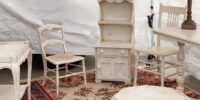Thinking of getting into antiques dealing but have no idea where to start? We’ve put together a comprehensive beginner’s guide on what to look out for when buying, valuing, storing and selling antiques and collectables.
Table of contents
Jump to the section you are interested in..
BUYING ANTIQUES
– Why buy antiques
– What to invest in
– How to choose antiques
– Where to find antiques and collectables
– Buying antiques
– Other buying advice
VALUING ANTIQUES
– How do you value antiques?
– How are antiques dated & appraised?
– Where to appraise antiques
– Valuing your antiques online
– Other advice for valuing & appraising antiques
STORING ANTIQUES
– How to store antiques & collectables
– Restoring your antiques
– Restoring antique furniture
– Where to store your antiques
SELLING
– Which antiques should you sell?
– Where to sell your antiques
– Selling your antiques online
– How to sell your antiques & collectables
Buying Antiques
Why buy antiques
An antique must be at least 100 years old to officially be called an antique. The lifespan of antique items means that they tell a story as relics of the past – about fashions, historical events, customs and more. As well as being objects of aesthetic interest, we can learn a lot about the past from them too. A family heirloom inherited from generations that have gone by provides a tangible, personal link to your own heritage.
“Antiques are timeless, meaning that as they are not dependent on current trends or fashions, they retain or increase in value with time.”
Buying antiques is a good investment because you can make a profit from them once you no longer want them, and they will find a new home rather than ending up in a skip or landfill site like a lot of cheap modern furniture. Antiques and collectables are all about reuse and recycling, making them environmentally friendly as well as unique additions to your home or jewellery collection! Antique furniture is generally really well made, and handmade. If it has already lasted so long, the chances are that it was well made and will continue to last throughout the years. This timelessness adds a unique contrast to modern decor and creates dynamic combinations.
What to invest in
Only invest in items that you really like and that you will be happy to own for years to come. It takes a lot more time and effort to find and collect antique pieces, so you’ve got to make sure you only buy ones you’re really happy with. The financial value of the antique should only be a bonus factor – after all, as trends change, something that’s not that valuable now may become so in the future. Look for original untouched furniture that hasn’t been restored or altered in any way. Pieces with provenance (a record of ownership, used as a guide of authenticity, such as purchase receipts, documents from auction houses and professional appraisals) are preferable.
“Only invest in items that you really like and that you will be happy to own for years to come.”
When looking for jewellery and accessories, try to stick with big name designers. Signed pieces by major designers are ideal if you can afford them. Some big names to look out for include Tiffany & Cartier.
How to choose your antiques
Probably the most important piece of advice for buying antiques as a beginner is to do your research. Learn as much as you can about a particular collecting field and know the market potential of an item before you start shopping! Look out for market trends, types and varieties within the field, their history, price ranges; the more you know, the better equipped you will be when starting to browse and buy!
Perhaps easier said than done, but with a bit of research and by asking the right questions, try to spot the next big thing. You don’t necessarily have to go for what’s popular right now, but rather look out for upcoming trends and try to predict or gauge what may become popular in the future when you might think about reselling your item.
Look for rare items. This is key in the world of antiques and collectables. It may sound obvious, but the more unusual the item, often the more valuable it is. Look for quirky items, something that will get noticed, or an item with an unusual detail.
Beware of fakes. Sometimes pieces from different periods have been put together into one item. Study the item closely – a lack of wear and tear or something that looks too new (for an antique!) should be critically evaluated. After all, antiques should be over 100 years old and this should show in some way. Use a loop (eye glass) to inspect jewellery and other smaller items properly, and never be afraid to get an expert’s opinion.
Try to negotiate on price in a friendly way. You want to get the best deal possible, but you don’t want to insult the seller and you want to build a good relationship with the dealer for potential future business. It is polite to ask for a 10% discount but anything more could be considered too much. If the dealer immediately drops their price, it demonstrates that they’ve taken into consideration haggling in the first place, so you can try and (politely) push for an even better deal. If you’re interested in a particular field, try and build a strong relationship with a specialist dealer.
Where to find antiques and collectables
You can go straight to the top and buy antiques from Britain’s leading established antique dealers, members of one of the two top UK trade associations (British Antique Dealers Association, BADA, or Association of Art & Antique Dealers, LAPADA). They will know their stuff and have comprehensive knowledge of what an item is worth. Often, they will have researched and travelled to find a special piece, so something that may seem expensive now may in future prove to be the best investment.
Items bought from specialist antique dealers will hold or increase their value better than a lesser equivalent. Antique centres combine numerous dealers under one roof, which is a great way for a new collector or someone with limited time to browse a variety of items and see what it is you really want to start collecting. Often these centres are dealer association approved so you can be assured they are of a certain standard.
“Auctions are a great place to immerse yourself in the world of antiques, learn a lot from more experienced buyers and pick up an unrecognised gem.”
Jumble sales and car boot sales are great places to pick up bargains and are generally where you’ll find more lower-end antiques, collectables and art. You will have to search and negotiate hard, but there is the potential to find undiscovered treasures!
Charity shops and bric-a-brac shops are also more suitable for lower-end collectables. Items donated to charity shops are usually ‘vetted’ first by a local antique dealer and therefore many of the better pieces don’t make it to display. They are good places to find some unique pieces at bargain prices, but don’t count on coming across a million pound treasure!
Antique fairs are one of the most popular places for antique hunting, where you will find a large variety of all sorts of items from dealers at their stalls. These fairs run up and down the country all year long, with Newark International Antiques & Collectors Fair being the largest event of its kind in Europe. It is held at Newark and Nottinghamshire Showground and hosts up to 2,500 stands, boasting a huge range of products. It attracts thousands of dealers and antique buyers from across the world every other month – definitely one for the antiques hunter’s calendar!
Auctions are a great place to immerse yourself in the world of antiques, learn a lot from more experienced buyers and pick up an unrecognised gem. General auction houses often carry out house clearances and have a wide selection of items on offer. If an item goes unsold you can talk to the auctioneer after the sale, as he may be willing to take the ‘reserve’ price set prior to the sale.
Alternatively, you can phone the vendor to try and get the best offer. At specialist auctions, the items will have been specially identified and dated, and set a pre-sale estimate. You are guaranteed to find some of the best objects here. If you buy at an auction house you will have to pay a buyer’s premium on top of the cost of the item, plus VAT.
Buying online
Looking for antiques and collectables online is a good option if you’re not sure of exactly what type of items you’re looking for. It’s also great if you’re short on time or can’t travel to a specialist fair or auction to have a look. There are specialist websites dedicated to buying and selling antiques online, such as sellingantiques.co.uk, where items are listed with lots of detailed information.
Online marketplaces such as Friday-Ad also offer a range of antiques and collectables, but you must ensure you check the credibility of the seller and the description of the piece. Remember that when buying online you’ll need to consider the shipping costs. Also, as you can’t see or touch the item before purchasing, think about how easy the item will be to return if you’re unsatisfied when it arrives.
Other buying advice
Insure antiques you buy. Collectable antique items often carry significant value, and cannot be replaced if lost or stolen, so insuring them is key. Premiums don’t have to be expensive if you only have a few items. When visiting antiques fairs and car boots sales, carry cash. Unless you are going to be buying highly expensive items, you will need cash in most cases. Never offer cash straight away when negotiating until you have agreed a fixed price. Once you have agreed a price, ask if there’s any further discount for paying in cash.
Valuing antiques
How do you value antiques?
When valuing antiques you need to ensure you have a good baseline knowledge of your item. You should find out as much information as possible before valuing your item, but important factors to be aware of (if possible) include the item’s style and material, the period in which it was made and who made it. This information is available in general reference books on antiques or antiques guides, which you should be able to locate from a library. Ensure that the guide you use is recent and up to date. This will help you gain a ballpark figure for the value of your item.
“Check online auction websites to see how much people are willing to spend on items similar to yours. “
There are also online price guides which list different types of antiques and collectables with a range of prices you can expect to get from them. Kovel’s is considered the best, and you can get a free subscription or pay a fee for premium access. Another approach is to look for similar items in local antique shops and to assess their similarity and worth.
Compare the condition, check for differences in style, material, and the maker and see how much they are being sold for. Speak to the antiques dealer about how they priced their items, but never ask them to appraise your item (unless you know for certain you will not sell your item to them). You should never let a dealer appraise an item they intend to buy as this may obscure their valuation greatly.
Check online auction websites to see how much people are willing to spend on items similar to yours. However, you must keep in mind that these sites are very competitive and one of the main aims is often to sell quickly, so prices are likely to be on the lower end of their potential worth. This is a good way to see what other similar items are available on the market and to get a ballpark figure for what yours may sell for, but it shouldn’t be too heavily relied on.
How are antiques dated and appraised?
“Look for maker’s marks. Antiques that have a manufacturer’s or designer’s mark will be worth more than those that do not.”
Appraisers can give you different kinds of price valuations depending on how you want to sell your item. Before getting it appraised, decide what kind of value you want to find out in your appraisal, these are the main types:
Auction value – rare and valuable items are often sold at auctions as people may be willing to spend more on them, but if items are less rare they tend to sell for less than they would at retail price as there is not much demand for them.
Retail value – this is good if your item isn’t that rare and you don’t expect its value to be high. Remember though, antique dealers won’t buy your item from you at full retail value as they then wouldn’t make a profit.
Insurance value – this is the amount you’d need to replace your item in a reasonable amount of time if it was stolen or destroyed. This is useful if it is especially valuable. When dating the collectable item, look at the joinery of the furniture. Can you gauge how it was put together – machine cut or by hand? Most handmade pieces will show some irregularities on the surface.
Style is also an important factor and there is a huge range of styles from different periods. Understanding what style means is important – if something is Louis XV style it does not necessarily mean it is a mid-18th-century French original. It means it was made later in the style of an earlier period and fashion. Some popular styles include Chippendale, Rococo Revival, William and Mary and Queen Anne. Be careful, as styles can be prolifically reproduced.
Look for maker’s marks. Antiques that have a manufacturer’s or designer’s mark will be worth more than those that do not. They’re often small, so you may need to use a magnifying glass!
Where to appraise antiques
Most people hire a professional appraiser (who is not also a dealer) to value their antique items. There are a few things to look out for when doing so; they should never offer to buy your item from you, and they should not charge you a percentage of the value of your item.
“A trustworthy appraiser will charge a flat or hourly fee for their valuation and won’t offer to buy the item from you”
A trustworthy appraiser will charge a flat or hourly fee for their valuation. It’s important to get references when seeking to hire an appraiser – from professional organisations or from antique dealers. Talk to several before choosing one and try to find a specialist in the kind of item you have if you can. Make sure to ask for a written estimate of the fee and how long it will take to appraise. Alternatively, you can get your item appraised by an auction house appraiser. Sometimes they offer free valuations or set up appraisal days. They will have lots of experience and knowledge, be well trained and certified appraisers.
Valuing online
There are lots of websites to get your item appraised by a professional. Search for a website that is specialised in your kind of item. When submitting your item online to be evaluated by an appraiser, ensure you send numerous photos of the item from a variety of angles. Include shots of the whole item as well as close-ups, and be sure to photograph the item’s details, including maker’s marks.
Photos must be of high quality, well lit, in colour and in focus. Don’t misrepresent the item by hiding flaws or altering pictures, as this will just give you a misvaluation. Give a full, detailed description of your item, including size dimensions, colouring, and any details you know about the item’s history and origin.
The cost of an online appraisal is less expensive than an in-person appraisal, but be wary that this method won’t be as thorough. You can expect to pay at least £25 for a single online antiques appraisal.
Don’t alter your item before having it valued – it could lower the value of the item if the work is not overseen by an expert.
Advice for valuing and appraising antiques
Beware of reproductions, fakes and forgeries. Be wary of signs of damage and over-polishing – this will have an impact on value. Also be wary of signs of restoration – clever techniques to repair antique items can easily go unnoticed to the untrained eye. For example, repairs made on furniture with machinery or tools that weren’t available when the piece was originally made are a telling sign that restorative work has been done on the original.
Ensure your item’s authenticity by looking for signs of ageing and signs of wear and tear. For porcelain goods, use ultra-violet light to look for restorations, cracks, chips and damage. When evaluating glass items, modern materials will not emit the same glow as antique glass. Another thing to note is that modern paint glows when held under ultraviolet light. Don’t alter your item before having it valued – it could lower the value of the item if the work is not overseen by an expert.
Storing your antiques
How to store antiques and collectables
Storing items correctly is important to maintain their condition and value. Depending on the type and size of the item there are different recommended ways to store and transport items. You should always have an inventory of the contents of your storage unit to keep track of what items you have stored where.
Items that need wrapping should use acid-free paper to prevent corrosive damage. Small items should be stored in closed containers that are clearly marked
Items that need wrapping should use acid-free paper to prevent corrosive damage. Small items should be stored in closed containers that are clearly marked.
Paintings of high value should be wrapped in glassine (special air and water resistant paper), placed in clear plastic and stored inside a custom made wooden crate surrounded by cardboard or foam for further protection. Art work should always be stored vertically. Mirrors and other glass items should be covered with bubble wrap or other protective covering and secured with packing tape. There are special boxes available for packing mirrors that are particularly breakable.
Glass items should always be stored flat and never have anything stacked on top of them. Antique furniture should be dusted, cleaned and conditioned before storing. The pieces should be individually wrapped in sheets or blankets and placed in custom bags or covers to keep safe. Cover exposed areas like chair legs with bubble wrap to protect them. Connected furniture pieces such as a bed frame and headboard should be disassembled and wrapped separately.
Never stack items – keep them separate and free-standing. Rugs should be cleaned and vacuumed, rolled up tightly and wrapped doubly in plastic.
Books and documents should be wrapped with acid-free paper and placed in a plastic bag, and then inside a book box. Use cardboard in between each book for extra protection and to ensure no bending. You can use bubble wrap or foam peanuts to line the box and prevent further movement. Never place books in a box with the spines facing upwards as this could easily bend them. Antique documents can be stored in archival quality plastic sleeves, and then placed all together inside an album or separately within a document box.
Restoring your antiques
The aim of restoration is to bring back an antique item to its original state. If possible, this means using the same materials and methods from the period to do so. Remember that although restoration may increase an item’s aesthetic value, it may actually decrease its monetary value.
Do your research before you go ahead with restoring an item. Examine your item thoroughly to identify its problem areas and seek numerous opinions on it. Find out the best and worst case scenarios; the risks involved, how long it will take and the potential results of restoring the item. Decide whether it is best to seek advice and help from a professional antique restorer if you have any doubts as to whether it is worth restoring or if it may negatively affect the item.
Before restoring your item, remove all working parts and dismantle it to ensure you get in all the nooks and crannies and that you can restore and clean each part with the right stuff for the material. Some decorative parts may need individual cleaning.
Restoring antique furniture
When restoring furniture pieces, you should always have the original finish preserved. Use a wax finish as it’s easy to apply and it will clean any old dirt and keep a nice finish. It must be applied correctly to avoid any smudging, streaks and dullness so ensure you read the instructions first.
For valuable pieces and to ensure you don’t make any mistakes, it’s best to get a professional restorer to do the job.
If the furniture is really dirty and the wax doesn’t do the job, you can clean it using a polish. Alternatively, you can mix four parts white spirit with one part boiled linseed oil and rub this on with a cloth to clean it.
You can usually treat woodworm holes yourself, unless it is really badly infested that it is structurally weakened. If this is the case it is best to seek professional advice from a good antiques restorer. If the damage is slight, treat it with a commercial woodworm killing fluid.
General wear and tear and shrinkage due to temperature changes can all cause holes and cracks in antiques. These can be fixed using wax sticks, and if you can find one as close to the colour of the wood as possible, it’s an inexpensive and easy way to cover up any cracks and flaws. Some people like to see the honest marks as they show authenticity and originality, but if you want to cover them up this is a good way to do it as it does not cause any damage to the piece as long as it is done correctly.
Paint marks can be easily removed, if you ensure that the right method is used for the right type of paint. Any paint that is still wet can be wiped off immediately. Dried water based paint should be wiped off with a damp cloth, and for acrylic or emulsion paint marks use methylated spirit on a cloth and dab the area gently, then scrape off the paint with your fingernail or a soft piece of wood to take it off. Be careful to not penetrate the polish and remove some of this too – try a small area first before doing the entire piece.
An important part of furniture restoration is getting rid of oil and grease blemishes. If the marks are small, you can blend in the grease marks by rubbing them with a good furniture wax, then buffing with a clean cloth. To completely remove stains, you will need to strip off the old finish using a good paint or polish stripper, then coat it overnight with a thick paste which combines a talcum powder with methylated spirit. This should draw the oil out of the wood, then you can sand and re-polish the pieces. For valuable pieces and to ensure you don’t make any mistakes, it’s best to get a professional restorer to do the job.
Tables will often have water ring marks from vases and drinking glasses. You can use a polish reviver to remove these marks, and then use a good quality antique furniture beeswax to finish. For candle wax marks, a good technique is to put crushed ice into a plastic sealable bag and put this into a soft cloth; hold this on the hard wax for five minutes, which should make it very brittle and easier to scrape off by hand.
Where to store your antiques
It is important to get the storing environment right when storing antiques and collectables to ensure they hold their condition and value, especially if they will be in storage for a long period of time. The environment should be temperature and humidity controlled such as a climate-controlled storage unit or within your home. Store your items somewhere that is protected from animals and pests (moths, cockroaches and mice can all damage your items).
Transporting your items has the most potential to damage them. If you use a moving company, ensure they are reputable.
Ensure it is a secure place – if it’s somewhere outside your home, ensure the storage facility has security cameras, gated access and alarms fitted. Bad places to store your antiques would be a garage, attic or basement. Transporting your items has the most potential to damage them. If you use a moving company, ensure they are reputable.
When transporting items to and within a storage facility, use a drive up unit or an inside unit on the ground floor to minimise the damage and ensure ease of accessibility.
Selling antiques
What types of antiques sell?
There are a number of types of items that are easy to pack, store and transport which make them easy for the buyer to take away. Therefore, some items that may be easier to sell and good to consider as a first time seller include pottery and porcelain goods, figures, vases, books and jewellery.
Large furniture pieces tend to be more difficult to sell and the buyer has to be really dedicated to buy these items. Therefore, if you want to appeal to the mass market it is best to stick to smaller, less niche items.
Where to sell your antiques
There are a number of different places you can sell your antiques items at, depending on the types of things you are selling and your target audience.
Anything can be sold at an auction, but it is highly recommended as a place to sell rare, high-end or medium items.
A private sale is the best option for selling rare or high-end antiques and collectables. You can negotiate by yourself or through a broker; brokers usually have a network of buyers and they have experience in negotiating in these situations. By selling this way you know where your item is going and you can take your time negotiating. On the downside, you are limiting your item’s exposure, as you have to spend time negotiating back and forth until both parties are happy. Furthermore, you may have to deal with shipping and refunds, and if you are using a broker you will have to pay them a fee.
Anything can be sold at an auction, but it is highly recommended as a place to sell rare, high-end or medium items. The event and your items will be well advertised (via flyers, catalogues emailed out to the entire auction house mailing list, or via online listings), there will be a large buyer base and experts will be on hand to value your items and take care of any handling and shipping matters. At auctions you can set a reserve price for your item, which is the minimum price that must be met before the auction can be won, so you can ensure your item is only sold at a price you are happy with.
Be aware that it can take a few weeks or months depending on the auction schedule, and some items may remain unsold. There is usually a seller’s fee involved at an auction (between 10-20%) and there can be additional costs involved (such as reserve fees, photograph and transportation costs).
Consignment is when you put your item up for sale in a shop to be sold for you. Many antiques shops do this instead of buying the item from you, and the fee for this is usually between 10 and 30%. This is a good method of selling for mid to high-end antiques, and it is also a good way of getting in front of targeted buyers and to help out your local antique shop. It may however take a long time to sell, so it’s not a good option if you’re looking for a quick, guaranteed sale.
Newspaper classifieds, such as The Friday-Ad paper, often have antiques and collectables sections. This is a good way to sell if you want to sell locally and reach thousands of committed buyers.
Selling at a garage sale is an easy and quick way to sell your items. You may not get the item’s full potential value at a sale like this, but if you’re willing to be flexible on price this is a good place to sell.
Similarly, selling at an antiques fair is a good place to sell for a wide range of items. Keep in mind that buyers will often be visiting with particular types of antiques in mind, and they will know their stuff much more than at a generic garage sale.
If you’ve never sold goods at an antiques fair before, start with a small, local market. Starting off with a huge national trade fair may be intimidating and you may not be fully prepared. Try to pick a fair that suits what you are trying to sell – you can often find niche fairs that specialise in particular categories of items. This way you’ll ensure buyers are looking for what you are selling, and that you’ll get the value you deserve for your items. Newspaper classifieds, such as The Friday-Ad paper, often have antiques and collectables sections. This is a good way to sell if you want to sell locally and reach thousands of committed buyers. The Friday-Ad also advertises local auctions and antiques fairs.
Selling your antiques online
You can sell your antique items online for free and from the comfort of your own home on marketplace websites such as the Friday-Ad.
This option is best for low to middle-range items, as you will have a large buyer base, can sell things quickly, and there are various payment options. However, you may get less than the true value of your item, and you will need to consider delivery and refund logistics.
There are also special online antique shops on which you can sell your item. These are specialised for antique items and require a minimum standard for the item’s description and the quality of photos you supply of your item. You can look at similar items on your chosen auction or classifieds website to compare valuations.
Take good photos from various angles, and include as much detailed description as possible.
How to sell antiques & collectables
Failing to plan is planning to fail; so the saying goes and so is also the case for selling antiques! Make sure you know exactly what you are selling by doing your research. Plan and prepare before you go to sell – organise and price your items and plan your space and transportation.
Consider everything from packing and transporting your items, to how you will set them up to make your stand look attractive, to what you will need to provide your customers once they buy from you (such as carrier bags or boxes).
Make sure you know exactly what you are selling by doing your research. Plan and prepare before you go to sell – organise and price your items and plan your space and transportation.
Price all of your items clearly with a label. Taking the time beforehand to carefully consider your price will not only save you time and hassle on the day itself, it will ensure the price you set has been thought about and valued correctly, as well as making you look organised and professional! Use a sturdy table and lay your items out in an attractive way.
Pack your items with bubble wrap in well organised boxes. You can even use old towels and blankets for wrapping delicate items, and bring extra with you in case.
As with any secondhand sale, expect to haggle and expect to lower your prices.
Bring plenty of change with your for the sale and bring carrier bags for your customers. Anything that will make the day and sale run smoother for you and your customers is a bonus. Think ahead and bring any useful extras that may just come in handy – cello tape, bubble wrap or newspaper to pack your items with for your customers, for example. Bring along a friend or family member to help out. If they can help with packing up items or getting change for a customer, you can continue selling! Also, you’ll need someone to cover for you when you need a quick break, a trip to the loo, or if you fancy having a browse around the antiques fair too.
As with any secondhand sale, expect to haggle and expect to lower your prices. When thinking about what prices you are going to set, consider the fact that you will most likely have to negotiate, and think about the lowest price you would be willing to settle at. Always be polite and haggle in a friendly way.
Keep all of the paperwork with proof of your sales for tax purposes – anything you sell at an auction house counts as income. This rule varies when selling online, so always check before you advertise your items online.
www.telegraph.co.uk/finance/personalfinance/money-saving-tips/10115016/10-tips-for-making-money-from-antiques.html
www.telegraph.co.uk/lifestyle/interiors/7710371/Top-10-places-to-buy-antiques.html
www.apartmenttherapy.com/why-buy-antique-127257
www.antique-hq.com/where-to-sell-your-antiques-and-collectibles-1226/
www.wikihow.com/Price-Antiques-and-Collectibles
blog.priceselfstorage.com/how-to-store-antiques
antiquesworld.co.uk/helpful-tips-restoring-antique-furniture/
antique-marks.com/selling-antiques.html
Read more...
Hosting and Teaching International Students: A Rewarding Experience
Hosting students on a language homestay has proven to be an enriching experience for both student and host. Students are given an opportunity to learn the language in an authentic environment, as they engage in real-life conversations, gain cultural insights, and...
Pompoko Brighton Review
Pompoko Brighton Welcome to the Friday-Ad restaurant review series! If there's a restaurant, pub or café you want us to review, let us know in the comments. Today, we’re featuring one of our absolute favourite places to eat; the Japanese restaurant, Pompoko Brighton....
Sussex Health Food Stores: Health and Sustainability
Your body is your temple, and just like any temple, it needs to be taken care of. You wouldn't pour junk into a temple, so why would you do it to your body? A nutritious diet is essential for overall well-being, and one way to ensure that you're fuelling your body...



















